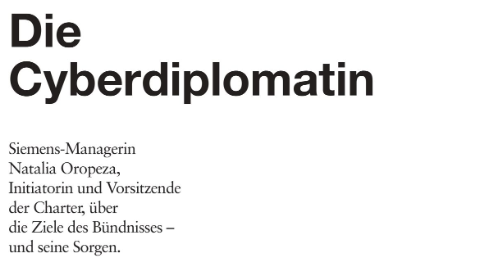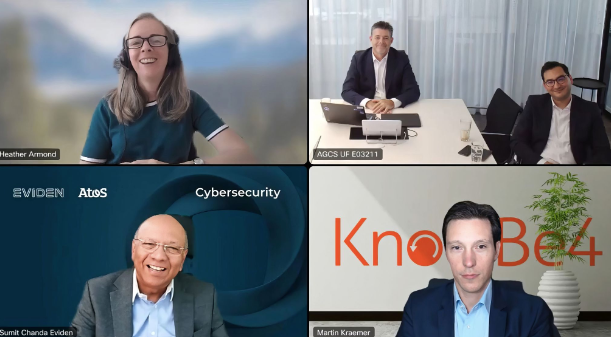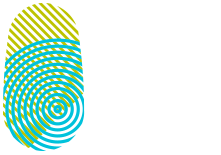Cyber-crime is a disturbing reality today and global efforts to reduce crime continue to evolve, with some proving to be quite effective. Information sharing communities present one such approach.
Information Sharing and Analysis Centers (ISACs) are industry focused and have been promoting information sharing for many years. The increased interest in information sharing is well justified and the reason behind it really quite simple. Most organizations whether large or small are vulnerable to cyber-attacks, even though they may employ multiple layers of defenses. Threat actors may breach a network by exploiting one of a seemingly infinite number of vulnerabilities or by convincing someone to click on a link or open an attachment in a phishing attack. Sharing threat information among the members of a community is a great way to enhance the security posture by informing the community of new threats that are evading defenses. In other words, information sharing increases communities’ knowledge and enables them to implement security strategies against new threats based on the gathered information.
In recent years, IBM has participated in information sharing communities and, in some cases, has established information sharing communities for customers or partners based on IBM’s Security and Enterprise Intelligence Management solution. Such an information sharing community is now being formed within the Charter of Trust on the basis of the Charter’s Principle 8 “Transparency and Response”.
These communities, whether public or private sector, large enterprises or small businesses, share relevant threat information to bolster the cyber defenses for the members of the community. The shared information may include but is not limited to malicious domains, threat reports, phishing samples, malware samples, malware hashes or IP addresses used by known threat actors. This information, when shared by a trusted member of the community, may provide the key piece of information that prevents a ransomware or destructive attack, which evades defenses and brings a company’s operations to a grinding halt.
In the Charter of Trust, our ambition is to put in place proven, appropriate policies and mechanisms to share threat information across the different industry sectors where partners are active; chip manufactures, end users, industrial systems, IT, cloud services, and certification organisations.
Carlos Carrillo, Global Threat Intelligence Liaison @ IBM Security and participant in the Charter of Trust Principle 8 Task Force


You may also like

Chairwoman Natalia Oropeza in Brandeins Magazine
In an interview with Dorit Kowitz, Natalia dives deep into the pressing issues facing the cybersecurity landscape, explaining how the Charter of Trust bundles the expertise of different businesses across several regions to stay resilient in the face of evolving threats. As Natalia Oropeza says: "We all win if cybercrime doesn’t win."
Here are three key insights from her interview:
🔑 Collaboration is essential: No single organization can tackle cyber threats alone. The Charter of Trust is a prime example that businesses nowadays are more transparent when it comes to attacks and that sharing information in this field can be beneficial.
🔑 Addressing the digital skills gap: The Charter of Trust is working to address the global shortage of cybersecurity professionals by encouraging diversity and actively promoting opportunities for women to join the field.
🔑 Unified regulations: Harmonizing global cybersecurity standards will reduce vulnerabilities, helping businesses and governments combat threats more effectively.
The full interview is available here: https://lnkd.in/gRm6ZDGC


Cybersecurity Awareness Month
The complexity and urgency of this topic gathered a lot of interest, with 600+ attendees throughout the whole panel, which was composed of Jon-Paul Jones, COO at AZ Commercial, Firas Ben Hassan, GenAI expert & Manager of AllianzGPT at AZ Technology, Dr. Martin J. Krämer, External Security Awareness Advocate at KnowBe4, and Dr Sumit Chanda, Global CISO at Eviden & Chair of the Global External Engagement Working Group at the Charter of Trust.
We are pleased to see Dr. Sumit Chanda from Eviden bringing in his unique CISO insight on what these emerging technologies mean in day-to-day cybersecurity practices and bringing in the Charter of Trust perspective on this topic as well.
Thank you, Ervin Cihan and Haydn Griffiths for inviting other CoT Partners and for the great initiatives that Allianz is putting together within this year’s Security Awareness Month. And special thanks to Heather Armond for the great moderation.


UK/EU Summit - “Risk to Resilience”
💡Under the theme “Risk to Resilience” the first event of this series was held in London and brought together professionals from different industries and regions. Detlef participated in the panel about the complex regulatory landscape and emphasized that new legislation like the EU AI Act, DORA and Hashtag#NIS2 continue to push the standard of care on cybersecurity and other risks.
Thanks to Shared Assessments for organizing such an amazing event and inviting the Charter of Trust to participate in this high-class panel alongside Andrew Moyad, CEO at Shared Assessments.



